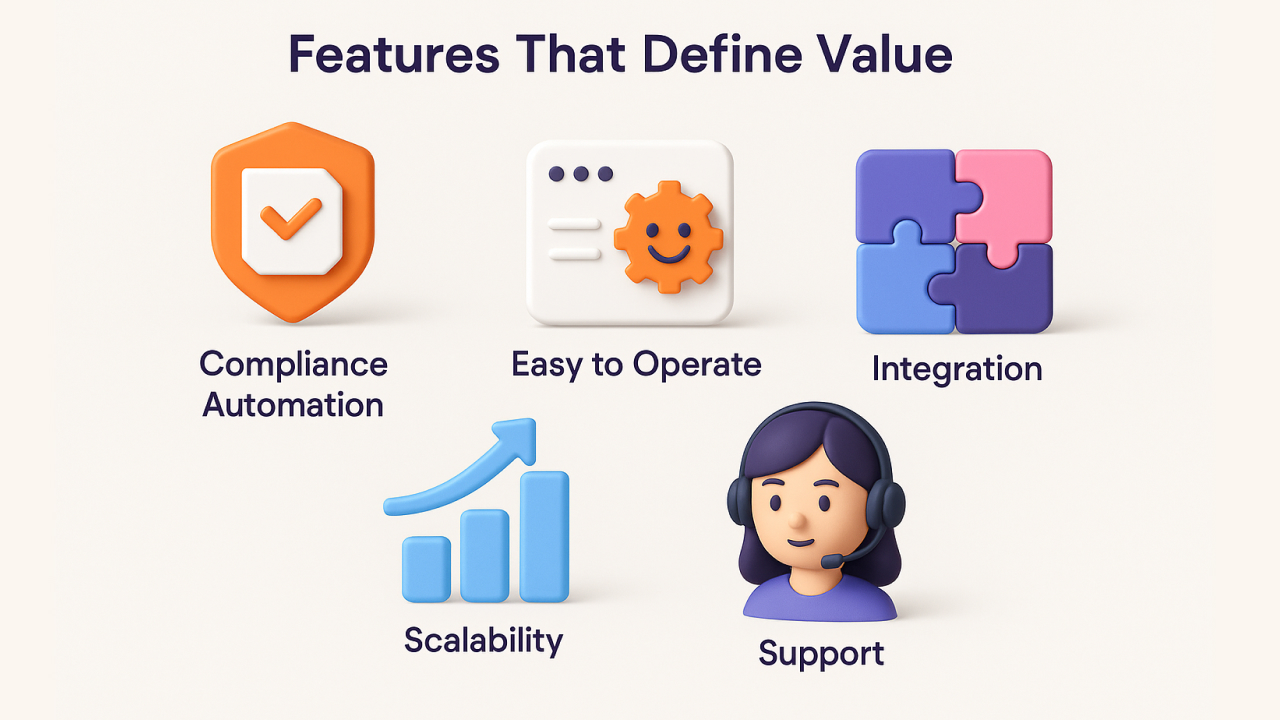When doing business, you simply get stuck between two questions; a question of how much it is going to cost me. and the question of whether it is really worth it. A fine specimen is payroll platforms. Every one of the founders, the HR managers and the heads of finance have tried, read and read through the software packages available, trying to come across the one which has the right mix of value and functionality that can actually make life easier. So, how do you figure it out? Let's break it down.
Why Cost Alone Isn’t the Full Picture?
On the face of it you might be tempted in choosing the right payroll platform that can be found. Who wants to spend more, after all, it does the job. It is, however, the case that payroll is not just about paying the workers, but also about compliance, tax filings, benefits, integrations and workflows.
Think about it. Are you saving money when you save five hundred dollars a month on software and you are spending hours correcting errors or searching paperwork lost or balancing tax returns? Probably not. The significant thing about having a payroll platform is the time and stress it is likely to save you, not the price.
Features That Define Value

One of the platforms would be more expensive than the other because of traffic? There are certain peculiarities, which should be considered:
- Compliance Automation: It saves money, which flows as fines and penalties.
- Easy to operate: Once your staff is lost, implementation is going to be a nightmare.
- Scalability: Will the platform grow as your business grows?
- Integration: Can it integrate with your accounting, HR and the time-tracking software?
- Support: Would you receive prompt assistance once something goes wrong?
These are what make a payroll tool not an expense, but an investment.
Advantage for SMEs: CRM-Payroll Integration
For SMEs and startups, duplicate data entry is the big pain point. Integrating your payroll system with your CRM can solve this problem for you. When your CRM and payroll systems work together, employee information, sales commissions, and role changes are automatically synced across systems. This reduces errors and is time efficient.
Consider a growing sales team. Your CRM tracks performance and commission structures while payroll handles compensation. Without integrating CRM with payroll, finance teams will spend time manually cross-referencing spreadsheets and calculating variable pay. On the other hand, with integration, commissions can be calculated based on real-time data from CRM, setting your team members free for strategic work.
Certainly, payroll software that connects seamlessly to your CRM and other business application may have a higher price tag initially, however, this results in less duplicate entry, lower error counts, and the ability to report from different places in one single report. Many lean SMEs see this efficiency as an acceptable investment, especially when evaluating different payroll systems. Assessing how well the platform integrates with your current CRM software, accounting software and HR tools is crucial when evaluating payroll options. ecosystems can drive better growth when connected.
Subscription Models Vs. One-Time Costs
The other consideration one should have in the cost value optimization is the awareness of how platforms are priced. These are as basic as monthly payments, as limited as pay-on-employee, pay-on-paycheck, and even a pay-on-service like benefits administration.
It is not just a takeoff of a sticker price and a sticker price, but it is the takeoff of the overall cost of ownership. I can take a typical example of one platform that can be deemed cheap yet charges an extra fee with every new employee or taxation form and this can be very costly for greater amounts of money. Even a prettier location that meets all the preliminary costs can also be rewarding in the long term.
The Hidden Cost of Mistakes
Mistakes in the payroll are not only humiliating, but also expensive. Failure to pay the employees on time, the incorrect categorization of the contractors, or a fault in computing the tax might amount to punishment and mistrust in the supervisors by the employees. Using a social network that causes you to take fewer risks is far better than a social network that makes you conjecture.
The question of who is the cheapest one when choosing the right payroll platform does not matter but who can save your business due to the assistance of the expensive errors which can cause a serious idle backlash.
Thinking Beyond Price Tags
In other situations, an entrepreneur is unwilling to invest in powerful payroll software just because they feel that it is a luxury at the moment since their business is not big. The thing is that when you are ready to grow, you need to have the tool that will not collapse the moment you begin to hire the 20th employee or even enter the new market.
Balancing Cost and Value in Real Life
I would simply like to consider one example. The budget payroll system utilized by company A is of a limited nature. The HR manager also wastes an extra 10 hours every month correcting the mistakes and manual report production. Company B will pay a little more money on a compliance option that is well-integrated and offers rapid response, and automated. Who in your opinion is saving in the long term?
The Role of Support and Service
One should not underestimate the value of human support. The most popular platforms can also crash or prove to be disorienting to use. That being the case, the presence of responsive and well-informed aid ought to be a game-changer. An example of such a cost is not having a telephone when you have a tax deadline to meet, not a cost to be seen.
Final Thoughts
It is the end of the day long-term thinking to balance between the cost and value. Payroll services do not stand on their own but enable you to base your success in running your company well.
So, instead of knowing what the minimum price is; ask, what is likely to cost me the least time, risk, and add to my growth? In the real world, it is all peace of mind, yours, your staff, and your organizations to choose the correct payroll system.



